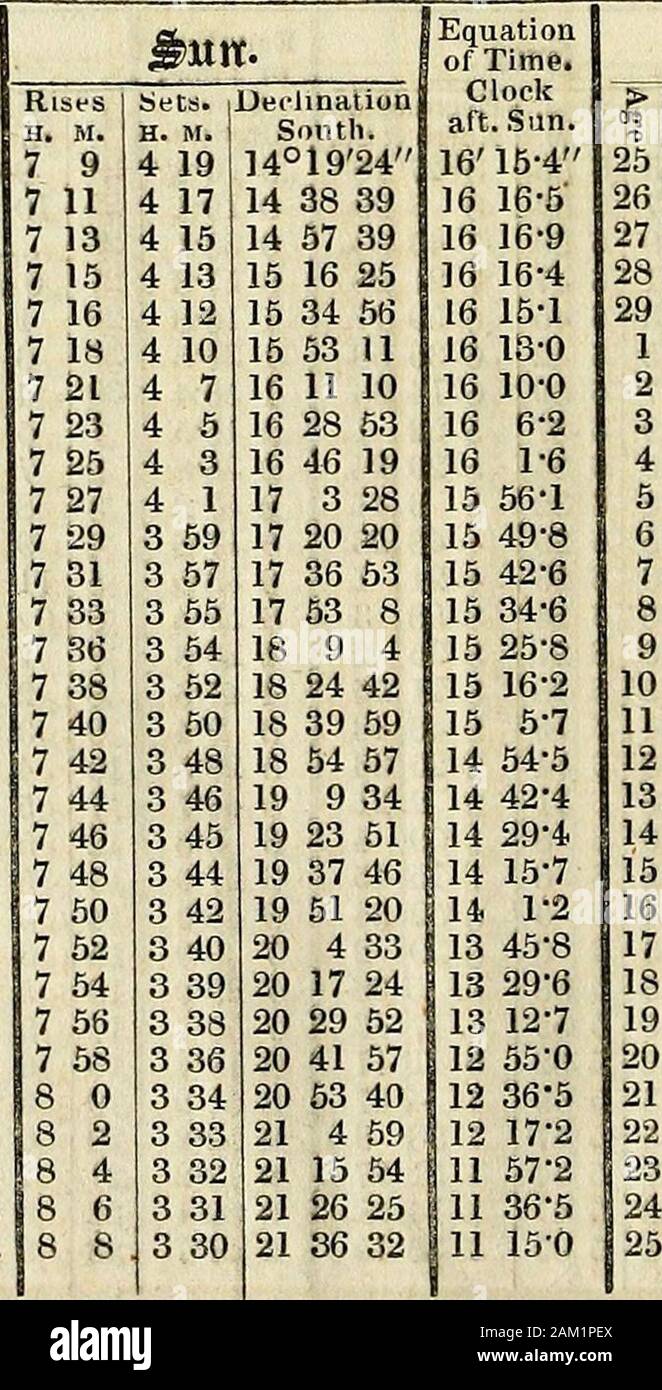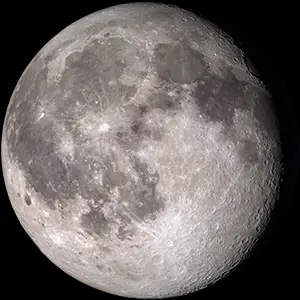When is the Next Full Moon?
The next full Moon will occur on Saturday, December 18, 2021, at 11:35 PM ET, and is known as the Cold Moon.
When we have a full view of the completely illuminated side of the Moon, that phase is known as a full moon. But following the night of each full moon, as the Moon orbits around Earth, we start to see less of the Moon lit by the Sun. Eventually, the Moon reaches a point in its orbit when we don't see any of the Moon illuminated. The full moon calendar 2021 and the next full moon including exact date and local times are listed below. When is the next full moon?. TODAY: Tuesday, October 26, 2021. Next full moon: Friday, November 19, 2021 - 01:59 am (MDT), UTC-06:00. The Moon takes 27.3 days to orbit Earth, but the lunar phase cycle (from new Moon to new Moon) is 29.5 days. The Moon spends the extra 2.2 days 'catching up' because Earth travels about 45 million miles around the Sun during the time the Moon completes one orbit around Earth. Nov 19, 2021 at 3:57 am. Previous Full Moon. Oct 20, 2021 at 10:56 am. Times for the Full Moon vary by time zone. Times and dates are based on the local time in New York. Change location. When is the Full Moon? The Full Moon is when the Sun and the Moon are aligned on opposite sides of Earth, and 100% of the Moon's face is illuminated by the. Look up your Moon sign with this calculator. Jump down below to Moon Tips to see what the moon signifies. Ⓘ Birth time is not always required because the Moon doesn't change signs every day. So, it's possible to know your Moon sign without a birth time, for certain days. Ⓘ If the Moon changed signs on your birthday, this calculator will.
Learn more about this month's full Moon by watching our short video below:
Need more full Moon dates and times? Our calendar with full Moon dates, times, folklore, and names from the Farmers' Almanac can be found below for the 2021 calendar year.
(Times listed are Eastern Standard or Eastern Daylight where appropriate.)
Full Moon Calendar 2021 | ||
|---|---|---|
| Full Moon Date | Native American Name | Time of Full Moon |
| January 28th | Wolf Moon | 2:16 PM |
| February 27th | Snow Moon | 3:17 AM |
| March 28th | Worm Moon | 2:48 PM |
| April 26th | Pink Moon | 11:32 PM |
| May 26th | Flower Moon | 7:14 AM |
| June 24th | Strawberry Moon | 2:40 PM |
| July 23rd | Buck Moon | 10:37 PM |
| August 22nd | Sturgeon Moon | 8:02 AM |
| September 20th | Harvest Moon | 7:55 PM |
| October 20th | Hunter's Moon | 10:57 AM |
| November 19th | Beaver Moon | 3:57 AM |
| December 18th | Cold Moon | 11:35 PM |
| Full Moon Date | Native American Name | Time of Full Moon |
| January 17th | Wolf Moon | 6:48 PM |
| February 16th | Snow Moon | 11:56 AM |
| March 18th | Worm Moon | 3:18 AM |
| April 16th | Pink Moon | 2:55 PM |
| May 16th | Flower Moon | 12:14 AM |
| June 14th | Strawberry Moon | 7:52 AM |
| July 13th | Buck Moon | 2:38 PM |
| August 11th | Sturgeon Moon | 9:36 PM |
| September 10th | Harvest Moon | 5:59 AM |
| October 9th | Hunter's Moon | 4:55 PM |
| November 8th | Beaver Moon | 6:02 AM |
| December 7th | Cold Moon | 11:08 PM |
Full Moon Names and Their Meanings
Full Moon names date back to Native Americans of North America. Tribes kept track of the seasons by giving distinctive names to each recurring full Moon. Full Moon names were applied to the entire month in which each occurred.
There was some variation in the full Moon names, but in general, the same ones were consistent among regional tribes. European settlers followed that custom and created some of their own names.
Here is Farmers Almanac's list of the full Moon names.
Full Wolf Moon – January
Amid the cold and deep snows of midwinter, the wolf packs howled hungrily outside Indian villages. Thus, the name for January's full Moon.
Sometimes it was also referred to as the Old Moon, or the Moon After Yule. Some called it the Full Snow Moon, but most tribes applied that name to the next Moon.
Full Snow Moon – February

Since the heaviest snow usually falls during this month, native tribes of the north and east most often called February's full Moon the Full Snow Moon. Some tribes also referred to this Moon as the Full Hunger Moon, since harsh weather conditions in their areas made hunting very difficult.
Full Worm Moon – March
As the temperature begins to warm and the ground begins to thaw, earthworm casts appear, heralding the return of the robins. The more northern tribes knew this Moon as the Full Crow Moon, when the cawing of crows signaled the end of winter; or the Full Crust Moon, because the snow cover becomes crusted from thawing by day and freezing at night.
The Full Sap Moon, marking the time of tapping maple trees, is another variation. To the settlers, it was also known as the Lenten Moon, and was considered to be the last full Moon of winter.
Full Pink Moon – April
This name came from the herb moss pink, or wild ground phlox, which is one of the earliest widespread flowers of the spring. Other names for this month's celestial body include the Full Sprouting Grass Moon, the Egg Moon, and among coastal tribes the Full Fish Moon, because this was the time that the shad swam upstream to spawn.

Since the heaviest snow usually falls during this month, native tribes of the north and east most often called February's full Moon the Full Snow Moon. Some tribes also referred to this Moon as the Full Hunger Moon, since harsh weather conditions in their areas made hunting very difficult.
Full Worm Moon – March
As the temperature begins to warm and the ground begins to thaw, earthworm casts appear, heralding the return of the robins. The more northern tribes knew this Moon as the Full Crow Moon, when the cawing of crows signaled the end of winter; or the Full Crust Moon, because the snow cover becomes crusted from thawing by day and freezing at night.
The Full Sap Moon, marking the time of tapping maple trees, is another variation. To the settlers, it was also known as the Lenten Moon, and was considered to be the last full Moon of winter.
Full Pink Moon – April
This name came from the herb moss pink, or wild ground phlox, which is one of the earliest widespread flowers of the spring. Other names for this month's celestial body include the Full Sprouting Grass Moon, the Egg Moon, and among coastal tribes the Full Fish Moon, because this was the time that the shad swam upstream to spawn.
Full Flower Moon – May
In most areas, flowers are abundant everywhere during this time. Thus, the name of this Moon. Other names include the Full Corn Planting Moon, or the Milk Moon.
Full Strawberry Moon – June
This name was universal to every Algonquin tribe. However, in Europe they called it the Rose Moon. Also because the relatively short season for harvesting strawberries comes each year during the month of June . . . so the full Moon that occurs during that month was christened for the strawberry!
The Full Buck Moon – July
July is normally the month when the new antlers of buck deer push out of their foreheads in coatings of velvety fur. It was also often called the Full Thunder Moon, for the reason that thunderstorms are most frequent during this time. Another name for this month's Moon was the Full Hay Moon.
Full Sturgeon Moon – August
The fishing tribes are given credit for the naming of this Moon, since sturgeon, a large fish of the Great Lakes and other major bodies of water, were most readily caught during this month. A few tribes knew it as the Full Red Moon because, as the Moon rises, it appears reddish through any sultry haze. It was also called the Green Corn Moon or Grain Moon.
Full Corn Moon or Full Harvest Moon – September
This full Moon name is attributed to Native Americans because it marked when corn was supposed to be harvested. Most often, the September full Moon is actually the Harvest Moon, which is the full Moon that occurs closest to the fall equinox.
In two years out of three, the Harvest Moon comes in September, but in some years it occurs in October. At the peak of harvest, farmers can work late into the night by the light of this Moon.
Usually the full Moon rises an average of 50 minutes later each night, but for the few nights around the Harvest Moon, the Moon seems to rise at nearly the same time each night: just 25 to 30 minutes later across the U.S., and only 10 to 20 minutes later for much of Canada and Europe.
Corn, pumpkins, squash, beans, and wild rice the chief Indian staples are now ready for gathering.
Full Hunter's Moon or Full Harvest Moon – October
This full Moon is often referred to as the Full Hunter's Moon, Blood Moon, or Sanguine Moon. Outline 3 21 3 – view onenote notebooks. Many moons ago, Native Americans named this bright Moon for obvious reasons. The leaves are falling from trees, the deer are fattened, and it's time to begin storing up meat for the long winter ahead.
Because the fields were traditionally reaped in late September or early October, hunters could easily see fox and other animals that come out to glean from the fallen grains. Probably because of the threat of winter looming close, the Hunter's Moon is generally accorded with special honor, historically serving as an important feast day in both Western Europe and among many Native American tribes.
Full Beaver Moon – November
This was the time to set beaver traps before the swamps froze, to ensure a supply of warm winter furs. Another interpretation suggests that the name Full Beaver Moon comes from the fact that the beavers are now actively preparing for winter. It is sometimes also referred to as the Frosty Moon.
The Full Cold Moon; or the Full Long Night's Moon – December
Moom 3 2 17 Full Movie
During this month the winter cold fastens its grip, and nights are at their longest and darkest. It is also sometimes called the Moon before Yule.
The term Long Night's Moon is a doubly appropriate name because the midwinter night is indeed long, and because the Moon is above the horizon for a long time. The midwinter full Moon has a high trajectory across the sky because it is opposite a low Sun.
Want to Learn More About the Moon & Astronomy?
- Moon Phase Calendar for upcoming full Moons, new Moons, and more!
- Astronomy news including a monthly Stargazers Guide and planet sightings
Moom 3 2 17 Full Screen
Remember, the Farmers' Almanac in print also has more information on upcoming best times to view Solar and Lunar eclipses, the planets, meteor showers, and more. Order your copy today!

